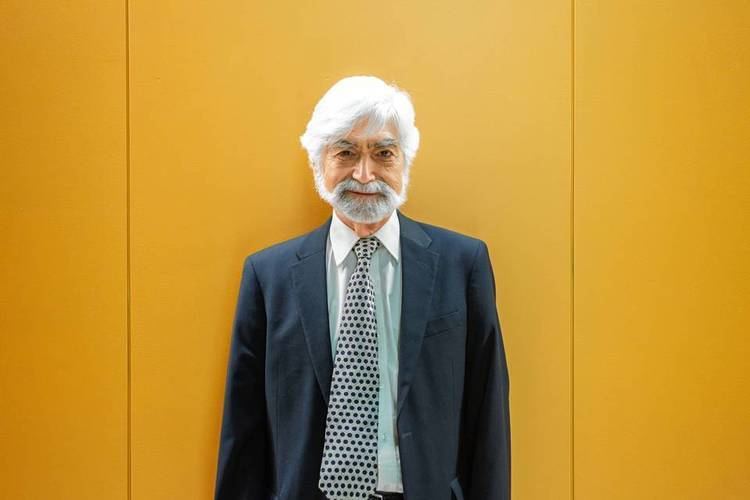Fields Physics, Neuroscience Role Physicist Awards MacArthur Fellowship | Name George Zweig Institutions LANL, MIT Notable awards Nas | |
 | ||
Similar People Murray Gell‑Mann, Richard Feynman, James Harris Simons, Julian Schwinger, Sin‑Itiro Tomonaga | ||
George zweig concrete quarks the beginning of the end
George Zweig (born May 30, 1937) is a Russian-American physicist. He was trained as a particle physicist under Richard Feynman. He introduced, independently of Murray Gell-Mann, the quark model (although he named it "aces"). He later turned his attention to neurobiology. He has worked as a Research Scientist at Los Alamos National Laboratory and MIT, and in the financial services industry.
Contents
- George zweig concrete quarks the beginning of the end
- Science in seconds george zweig
- Early life
- Career
- Awards and honors
- References

Science in seconds george zweig
Early life

Zweig was born in Moscow, Russia into a Jewish family. His father was a type of civil engineer known as a structural engineer. He graduated from the University of Michigan in 1959, with a bachelor's degree in mathematics, having taken numerous physics courses as electives. He earned a PhD degree in theoretical physics at the California Institute of Technology in 1964.
Career

Zweig proposed the existence of quarks at CERN, independently of Murray Gell-Mann, right after defending his PhD dissertation. Zweig dubbed them "aces", after the four playing cards, because he speculated there were four of them (on the basis of the four extant leptons known at the time). The introduction of quarks provided a cornerstone for particle physics.

Like Gell-Mann, he realized that several important properties of particles such as baryons (e.g., protons and neutrons) could be explained by treating them as triplets of other constituent particles (which he called aces and Gell-Mann called quarks), with fractional baryon number and electric charge. Unlike Gell-Mann, Zweig was partly led to his picture of the quark model by the peculiarly attenuated decays of the φ meson to ρ π, a feature codified by what is now known as the OZI Rule, the "Z" in which stands for "Zweig". In subsequent technical terminology, ultimately Gell-Mann's quarks were closer to "current quarks", while Zweig's to "constituent quarks".
As pointed out by astrophysicist John Gribbin, Gell-Mann deservedly received the Nobel Prize for physics in 1969, for his overall contributions and discoveries concerning the classification of elementary particles and their interactions; at that time, quark theory had not become fully accepted, and was not specifically mentioned in the official citation of the prize. In later years, when quark theory became established as the standard model of particle physics, the Nobel committee presumably felt they couldn't recognize Zweig as the scientist who first spelled out the theory's implications in detail and suggested that they might be real, without including Gell-Mann again. Nevertheless, in 1977 Richard Feynman nominated both Gell-Mann and Zweig for the Nobel prize, presumed to be his only nomination for such. Whatever the reason, despite Zweig's contributions to a theory central to modern physics, he has not yet been awarded a Nobel prize.
Zweig later turned to hearing research and neurobiology, and studied the transduction of sound into nerve impulses in the cochlea of the human ear, and how the brain maps sound onto the spatial dimensions of the cerebral cortex. In 1975, while studying the ear, he discovered a version of the continuous wavelet transform, the cochlear transform.
In 2003, Zweig joined the quantitative hedge fund Renaissance Technologies, founded by the former Cold War code breaker James Simons. He left the firm in 2010.
Once his four-year confidentiality agreement with Renaissance Technologies expired, the 78-year-old Zweig returned to Wall Street and co-founded a quantitative hedge fund, called Signition, with two younger partners. They hope to begin trading in 2015. Zweig was quoted as saying "life can be very boring" without work.
